Mastering the Art of Pairing Knife Sets for Chefs
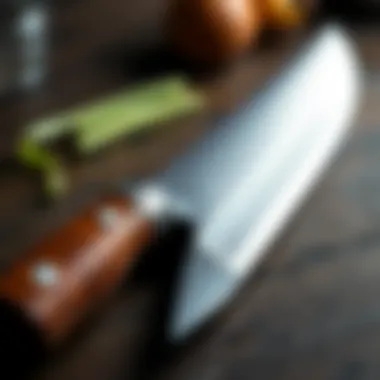
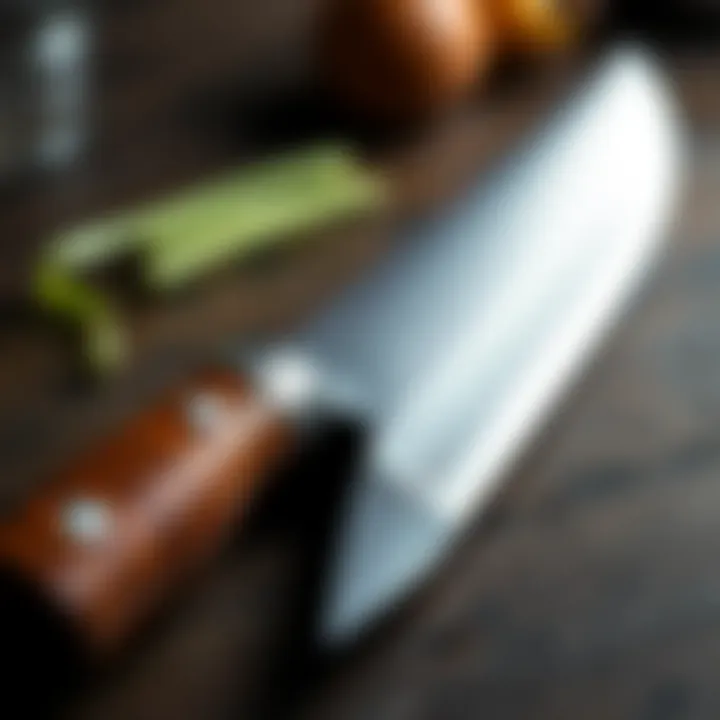
Intro
In the world of culinary arts, the right tools can make or break a dish. Among these tools, pairing knives are often the unsung heroes of the kitchen. These small but mighty instruments are not just add-ons; they play a crucial role in prepping food with precision and skill. Whether you're peeling apples, deveining shrimp, or crafting intricate garnishes, the versatility of a quality pairing knife is unmatched. This guide aims to shine a light on the significance of pairing knife sets and how they can elevate your cooking experience.
Pairing knives might vary from a simple stainless-steel blade to more elaborate designs featuring ergonomic handles, but the essence of what makes a good pairing knife remains the same: communication between the cook and the ingredients. Finding the right one involves consideration beyond just aesthetics. It's about functionality, comfort, and trust in the blade to help you execute your vision in the kitchen.
The scope of this guide encompasses the various aspects of pairing knives—from understanding their unique characteristics to exploring their culinary applications across a range of cuisines. In doing so, we hope to unravel not only the features that distinguish a quality knife but also the techniques that can enhance the skill required to wield them properly. Join us as we delve deeper into the essential world of pairing knife sets.
Understanding Pairing Knives
Pairing knives are hidden gems in the kitchen, often overshadowed by larger, more dramatic tools. However, their significance cannot be overstated. They embody precision and versatility, making them essential for intricate tasks that larger knives struggle with. Understanding what pairing knives offer can dramatically improve one's culinary experience. Whether you’re peeling apples, deveining shrimp, or shaping delicate garnishes, a pairing knife becomes an extension of your hand. It allows for greater control, giving home cooks and professionals alike the ability to execute fine techniques with ease and accuracy.
Definition and Purpose
A pairing knife is typically short, with a blade length of about 2.5 to 4 inches. This compact size is what makes it indispensable for intricate work in the kitchen. The purpose of a pairing knife extends beyond mere cutting. It's designed for precision work such as:
- Peeling fruits and vegetables
- Trimming meats or fish
- Cutting small decorations or garnishes
- Creating intricate shapes with various ingredients
Its nimble demeanor enables the user to manage tasks that require finesse, and this is where the charm of pairing knives shines through. They are simple tools, but when used properly, they enhance culinary capabilities, allowing for a more artistic and enjoyable cooking process.
Historical Context
The history of pairing knives is as intricate as the tasks they are designed for. Originating in Europe, these knives were first crafted in the late Middle Ages, becoming a staple in the kitchens of both the wealthy and the common folk. Unlike large butcher knives, which could be cumbersome for delicate work, pairing knives were created to handle smaller tasks with greater care.
The evolution of knife technology has paralleled culinary practices over the centuries. As cooking techniques diversified, so did the tools. In contemporary times, pairing knives have adapted to various cultural culinary needs. From French kitchens to Asian basements, the essential role of the pairing knife remains evident.
As food trends emerge and traditional techniques are revisited, the pairing knife’s role is even more vital. They reflect not just utility but also an appreciation for craftsmanship and culinary artistry that has withstood the test of time.
The Anatomy of a Pairing Knife
Understanding the anatomy of a pairing knife is crucial for anyone looking to enhance their culinary skills. This small, versatile tool is designed with precision in mind, making it an essential companion in the kitchen. Whether you're peeling an apple or deveining shrimp, the right pairing knife can make the task much simpler and more enjoyable. We'll dive into the various components that make up this knife, exploring how each part contributes to its functionality and why certain design choices have become popular among chefs and home cooks alike.
Blade Characteristics
Length and Width
The length and width of a pairing knife play significant roles in its usability. Typically, pairing knives range from 2.5 to 4 inches in length. This compact size allows for greater control during intricate tasks, such as trimming herbs or precision cutting. A narrower blade can offer sharper agility, hugging the contours of fruits and vegetables better than a wider blade might. However, it's worth noting that a wider blade can provide a little more surface area during slicing, which can be helpful for larger foods.
- Key Characteristic: The modest length allows for precision.
- Advantages: Facilitates delicate tasks with ease and ensures safety by minimizing accidental cuts.
- Disadvantages: May not be ideal for larger, bulkier food items.
Blade Shape
The blade shape of a pairing knife can influence its cutting style significantly. Most pairing knives feature a straight edge that empowers users with swift, downward slicing motions. However, some come with a slight curve, which is beneficial for rocking cuts through herbs or greens.
- Key Characteristic: The straight edge supports various tasks.
- Advantages: Allows for clean cuts without much pressure.
- Disadvantages: A curved blade may take time to get used to for those accustomed to a straight-edge cut.
Tip Design
The tip of a pairing knife often varies in design, but most feature either a pointed tip or a rounded one. The pointed tip allows for precision in piercing and starting cuts, especially useful when preparing delicate tasks like deveining shellfish or filing the cores of fruits. On the other hand, a rounded tip may decrease the chances of accidental punctures, making it safer, especially for novice cooks.
- Key Characteristic: Influences how the knife can be used on different food items.
- Advantages: Pointed tips offer precision, while rounded tips provide safety for new users.
- Disadvantages: A rounded tip might limit some cutting techniques.
Handle Design
Material Choices
The material of the handle can greatly affect both comfort and control. Popular choices include wood, which often offers a classic feel, and synthetic materials like polypropylene or rubber, which provide a non-slip surface. Wood can give a warm, traditional aesthetic but may require more care to maintain its integrity over time.
- Key Characteristic: Affects grip and durability.
- Advantages: Proper material can enhance handling and minimize fatigue during use.
- Disadvantages: Some materials may wear down faster or require special cleaning procedures.
Ergonomics
Moreover, ergonomics cannot be overlooked when examining a pairing knife's handle. A well-designed handle fits comfortably in the hand, accommodating different grips and ensuring minimal strain during prolonged use. Features like contours or textured surfaces can enhance grip stability, which is vital when executing high-pressure tasks.
- Key Characteristic: Concentrates on comfort and control.
- Advantages: Prevents hand fatigue and allows for extended use without discomfort.
- Disadvantages: Poor ergonomics can lead to repetitive strain injuries.
Balance and Weight
The balance of a pairing knife refers to the distribution of weight along its length. A well-balanced knife feels stable and comfortable when cutting. If the blade is too heavy for the handle or vice versa, it can compromise cutting precision and decrease the overall efficiency during use. Weight preference can also vary with individual taste; some may favor a heftier knife for a solid feel, while others prefer a lighter option for rapid cuts.
- Key Characteristic: Impacts how the knife feels in the hand.
- Advantages: A balanced knife enhances control and allows for smooth cuts.
- Disadvantages: An imbalanced knife can lead to less control and increase the risk of injury.
The anatomy of a pairing knife is fundamentally connected to its effectiveness in a variety of kitchen tasks. Whether it’s the blade characteristics or handle design, understanding these elements can elevate your cooking experience and refine your knife skills.
Types of Pairing Knives
Understanding the different types of pairing knives is crucial for any cooking enthusiast. Each type comes with its benefits, making it well-suited for specific tasks in the kitchen. This section will explore the nuances between the various kinds of pairing knives, enabling readers to make informed decisions that enhance their culinary prowess.
Straight Edge vs. Serrated
When it comes to pairing knives, the choice between straight edge and serrated is often a matter of personal preference, but there are distinct advantages to each type.
Straight Edge Knives A straight edge pairing knife is versatile and typically used for clean, precise cuts. This type shines when slicing through soft fruits and vegetables, allowing for smooth, uninterrupted motion. With a straight edge, you can create fine slices of an apple or peel a delicate peach without tearing the flesh. The sharpness is the name of the game here, as it often requires more frequent sharpening to maintain its edge.
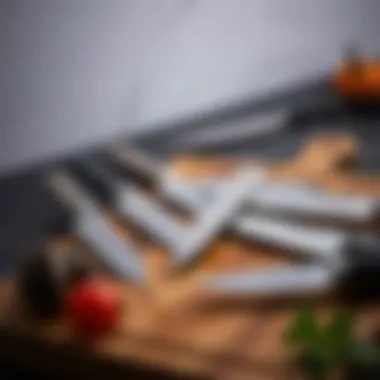
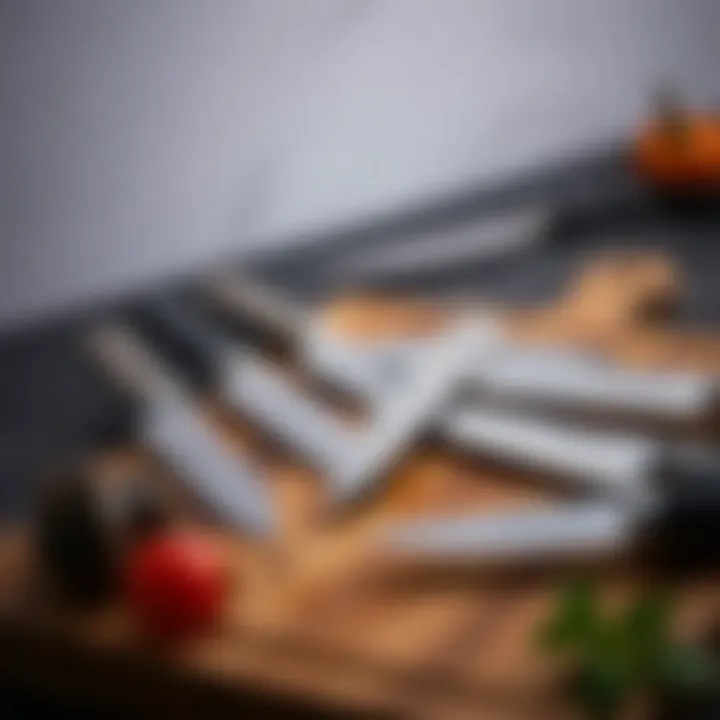
Benefits of Straight Edge:
- Clean cuts without tearing
- Easier to control angle during slicing
- Ideal for intricate tasks like deveining shrimp or trimming herbs
Serrated Knives On the other hand, serrated pairing knives excel at cutting through tougher exteriors. Imagine cutting a ripe tomato or a crusty loaf of bread: the jagged teeth grip the surface, allowing you to slice through without squishing the soft inside. While not as precise as straight edge knives, serrated blades have their own rhythm that can impress with the right technique.
Benefits of Serrated:
- Great for tough-skinned foods
- Less frequent sharpening needed
- Can handle various textures with ease
In essence, knowing when to pull out a straight edge versus a serrated knife can save time and elevate your cooking game. Keep in mind your personal cooking style and the types of food you often prepare. This understanding will help you choose wisely.
Japanese vs. Western Pairing Knives
The geographical distinction between Japanese and Western pairing knives lies not only in design but also in the philosophy behind their creation. Each style caters to specific cooking methodologies, thus providing unique benefits.
Japanese Pairing Knives
Japanese knives generally feature a thinner, sharper blade, which allows for delicate and precise cuts. The craftsmanship behind these blades often includes the use of high-carbon steel, which can hold an edge longer compared to traditional stainless steel. This means that a well-maintained Japanese pairing knife can cut with remarkable finesse, making it preferred by chefs who value precision.
Characteristics of Japanese Knives:
- Incredible sharpness for fine work
- Light and balanced, enhancing control
- Often designed for a specific purpose, like filleting fish or finely slicing vegetables
Western Pairing Knives
Western models typically embrace a sturdier design. With heavier blades and a more robust construction, they are versatile and rugged, suited for a variety of kitchen tasks. This type of knife often handles less delicate chopping jobs, like slicing through tougher root vegetables or meats, making it a reliable option for all-around use.
Characteristics of Western Knives:
- Heavier and thicker blade for durability
- Greater versatility for various cutting tasks
- Generally easier to sharpen and maintain, especially for beginners
Ultimately, selecting between a Japanese and a Western pairing knife boils down to personal preference. If you're all about precision and finesse, a Japanese knife may be your best bet. However, if you value versatility and durability, then a Western knife can be the workhorse you need in the kitchen.
Selecting the Right Pairing Knife Set
Choosing the right pairing knife set can make or break your culinary adventures. It’s not just about having a tool in hand; it’s about matching the tool to your cooking style and needs. A quality pairing knife helps you achieve precision and finesse in your knife skills, enhancing the overall cooking experience. Selecting a knife set tailored to your unique requirements can streamline prep time and elevate the dishes you create. Here, we’ll delve into factors to consider when making your choice and recommend some brands that stand out in the industry.
Factors to Consider
Budget
When it comes to budgeting for a pairing knife set, there’s a balance to strike. You don’t need to empty your wallet for a great knife, but it’s wise to avoid the cheapest options as they might not last long. A good budget range might be between $50 to $150 for a decent set, depending on the brand and materials. Investing in higher-quality knives can save you from frequent replacements and provide a better cutting experience.
One key characteristic of budget knives is that they often use lesser-grade steel. This can affect sharpness and durability. A knife that dulls quickly creates more hassle in the kitchen, and honed skills won’t shine with a lackluster tool.
Skill Level
Your skill level plays a crucial role in selecting pairing knives. If you’re a novice, opt for a knife that feels comfortable and easy to control—not too heavy or complicated. Look for those with ergonomic features and a forgiving feel in hand. But if you’re growing into more advanced techniques, investing in a higher grade blade that needs proper maintenance could be a good fit.
The typical characteristics of beginner knives include budget-friendly pricing and ease of handling, which can help build confidence. However, those who fall into the intermediate or advanced category may seek specialized blades that allow for the precision expected at higher cooking levels.
Usage Frequency
Understanding how often you’ll use your pairing knife is essential for making the right choice. If you’re an everyday cook, you might want something sturdy and reliable. On the other hand, if you only cook occasionally, there’s no need to splurge on top-tier products.
High-frequency users will benefit from durable materials that maintain sharpness and ease of sharpening. Conversely, infrequent users can rely on more affordable, good-quality options that won’t break the bank but still perform when needed.
Recommended Brands
High-End Options
For those looking to add a touch of luxury to their kitchen, consider brands like Wüsthof or Shun. These options often feature exceptional craftsmanship and are made from high-carbon stainless steel, providing both resilience and sharpness. Many chefs swear by their performance and longevity, making them a worthwhile investment. However, be prepared for a heftier price tag that reflects their quality.
A standout characteristic of high-end knives is their attention to detail; from the precision in the blade shape to the ergonomics of the handle, every aspect is crafted with performers in mind. The downside might be the maintenance needed, as these tools require regular honing and sharpening.
Affordable Choices
For those on a tighter budget, brands like Victorinox and OXO offer fantastic options that don’t compromise on performance. They present great value for the money while often coming with comfortable handles and sharp blades right out of the box.
An important characteristic of affordable knives is their ease of use; they are generally user-friendly, making them an excellent choice for novice cooks. The trade-off could be the tendency to dull quicker, but regular upkeep can mitigate that issue. In the end, you’ll find a solid knife set that allows you to level up your kitchen skills without breaking the bank.
Caring for Your Pairing Knives
Maintaining the quality and performance of your pairing knives is more than just good practice; it is essential for any cook passionate about their craft. These knives, while compact and seemingly straightforward, require thoughtful care to ensure they remain sharp, functional, and free from damage. Proper maintenance not only extends the life of the knives but also enhances the pleasure and efficiency of food preparation. Here, we will delve into the two key components of caring for your pairing knives: cleaning practices and sharpening techniques.
Cleaning Practices
Cleaning your pairing knives properly is critical to preserving their integrity and keeping them hygienic. It's tempting to toss them into the dishwasher for convenience, but this can lead to detrimental effects. Here’s a few points to consider for effective cleaning:
- Gentle Wash: Use warm water and mild dish soap to hand wash your knives, avoiding abrasive scouring pads that can scratch the blade.
- Immediate Cleaning: Wipe down your knives right after use to prevent residue from hardening and becoming difficult to remove later.
- Dry Thoroughly: After washing, dry your knives with a soft cloth to prevent rust or corrosion, especially if you have knives made from high-carbon steel.
Remember, a clean knife is a safe knife—keeping them in top condition not only improves longevity but also ensures food safety.
By following these practices, you can keep your knives in tip-top shape, ensuring they function well when you need them most.
Sharpening Techniques
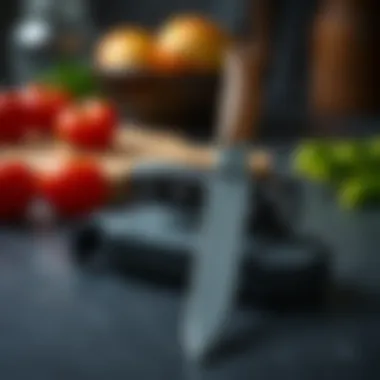
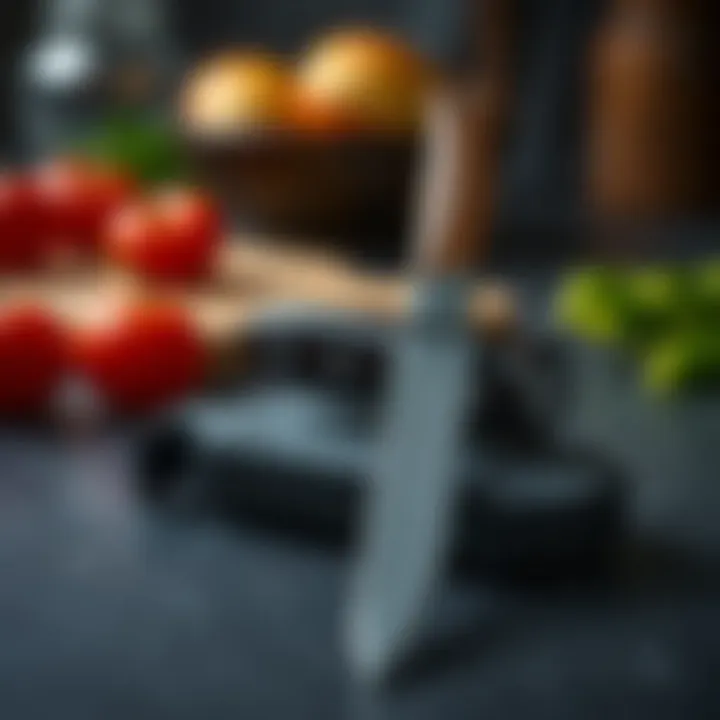
Even the finest pairing knives will dull over time. Hence, mastering sharpening techniques is essential for maintaining their performance. Here, we focus on two popular methods: using a whetstone and employing a sharpening rod.
Using a Whetstone
Sharpening with a whetstone is considered a traditional and effective method by many chefs. The unique aspect of this technique lies in its ability to produce a sharp, refined edge when done correctly. Here are a few key characteristics:
- Fine Control: A whetstone allows you to sharpen at varying angles, giving you control over the sharpness based on your cooking needs.
- Quality Finish: This method often yields a smoother, sharper edge compared to other sharpening methods, enhancing the knife’s ability to slice cleanly through food.
While this technique requires practice and perhaps a little trial and error, the benefits of a consistently sharp knife are worth it. However, it does demand time and patience.
Employing a Sharpening Rod
Opting for a sharpening rod is another popular choice, particularly for those who prefer quicker maintenance. The unique feature of a sharpening rod lies in its efficiency. Here’s what you should know:
- Quick Touch-Up: This method is excellent for daily maintenance, allowing you to keep your knife’s edge aligned between deeper sharpenings.
- Ease of Use: Unlike a whetstone, using a rod is straightforward and can be done quickly, making it a favored option for many home cooks.
However, it’s essential to recognize that while a sharpening rod can keep your knives functional, it won't replace the need for a full sharpening session with a whetstone. It's a useful tool, but not the panacea for dull blades.
By incorporating these cleaning methods and sharpening techniques into your routine, you ensure your pairing knives remain not just tools, but reliable partners in your culinary adventures.
Common Uses for Pairing Knives
Understanding the various uses of pairing knives is crucial for anyone looking to enhance their culinary skills. Pairing knives are often viewed as simple tools, but their versatility in the kitchen makes them invaluable. They allow for precision tasks that larger knives may not handle well. From peeling fruits to slicing vegetables, a pairing knife is handy for numerous culinary endeavors.
Fruits and Vegetables
The journey of a dish often begins with the preparation of its ingredients. A solid pairing knife becomes an extension of the cook’s hand, providing a balance of control and technique. Here’s a closer look at how a pairing knife excels in preparing fruits and vegetables.
Peeling
Peeling is one of the most fundamental uses of a pairing knife. The thin blade allows the user to make precise, thin cuts, ensuring that excessive flesh is left intact while removing the skin. A good pairing knife, like the Wüsthof Classic 3.5-Inch Pairing Knife, is remarkably adept in this aspect, comforting chefs with its ease of maneuverability.
• Key Characteristic: The slender blade reduces peel wastage.
• Benefits: Its sharpness allows for a clean cut, which is essential for crafting dishes that prioritize aesthetics, such as fruit salads.
• Disadvantage: A novice might find it difficult to control the angle, which can lead to an uneven peel.
Slicing
When it comes to slicing, particularly small and delicate items like shallots or herbs, a pairing knife shines. This task requires finesse that larger knives often lack. The pairing knife provides the ability to control the cut's depth effectively, which is particularly helpful when creating garnishes or when portioning smaller items.
• Key Characteristic: The blade’s design allows for intricate and detailed cuts.
• Benefits: Whether you're crafting a fine julienne or slicing an avocado, its versatility becomes apparent. It assists in achieving consistent results, which is vital in professional kitchens.
• Disadvantage: Given its smaller size, it might not suit larger vegetables, requiring larger knives for full efficiency.
Corning
Corning, or the art of removing the core from fruits and vegetables, is another application of the pairing knife that deserves attention. The small, precise blade allows for careful maneuvering around the core, shaping the executed cuts with ease.
• Key Characteristic: It can navigate contours and curves effectively, making it especially suited for larger fruits like apples or tomatoes.
• Benefits: The precision offered helps ensure that only the unwanted parts are removed, preserving the overall integrity of the item being prepared.
• Disadvantage: This technique requires some practice, as improper usage may lead to waste or can damage the fruit.
Herbs and Spices
The use of pairing knives doesn’t stop with fruits and vegetables; they are equally adept at dealing with herbs and spices. These delicate ingredients often require careful treatment to preserve their flavor and aroma. Using a pairing knife, one can precisely chop or mince herbs without bruising them, enhancing the overall profile of a dish. Think of the fresh basil in a Caprese salad, where the knife’s technique can either make or break its quality.
In summary, pairing knives are highly functional tools that accommodate a wide range of culinary tasks, especially when it comes to preparation techniques for fruits, vegetables, herbs, and spices. Their versatility allows chefs, whether beginners or experts, to elevate their cooking endeavors with greater finesse.
Developing Knife Skills
Mastering knife skills is one of the cornerstones of culinary excellence. It’s not merely about chopping vegetables or slicing meats; it’s about understanding your tools, enhancing your efficiency, and elevating your overall cooking experience. Pairing knives, with their unique design and versatility, serve as perfect instruments for honing these skills.
When you develop your knife skills, you gain several benefits:
- Precision: Accurate cuts improve both the visual appeal and cooking uniformity.
- Safety: Better handling of knives reduces the risk of accidents in the kitchen.
- Efficiency: With practice, tasks can be completed faster, allowing for smoother cooking processes.
Basic Techniques
The Pinch Grip
The Pinch Grip is a fundamental holding technique where you pinch the blade of the knife with your thumb and index finger while wrapping your other fingers around the handle. This grip not only offers enhanced control but also provides the ability to exert pressure in a balanced manner. A key characteristic of the pinch grip is its stability, allowing for more precise and controlled knife movements.
Choosing the pinch grip is ni natural for many aspiring chefs as it enables the user to keep a close eye on their cut, enhancing their precision for delicate tasks like mincing herbs or peeling. One unique feature of this grip is its adaptability; it can be used across various knife sizes and types, making it a valuable addition to every cook's repertoire. However, it may take some getting used to for those who have always relied on the traditional grip.
The Rocking Motion
The Rocking Motion is a cutting technique that involves a smooth, rocking motion of the knife from tip to heel. This method is particularly effective for chopping, as it allows for a consistent, uniform dice. A notable characteristic of this technique is its fluidity; it combines efficiency and effectiveness in one seamless movement.
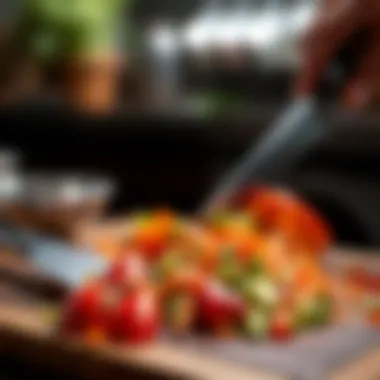
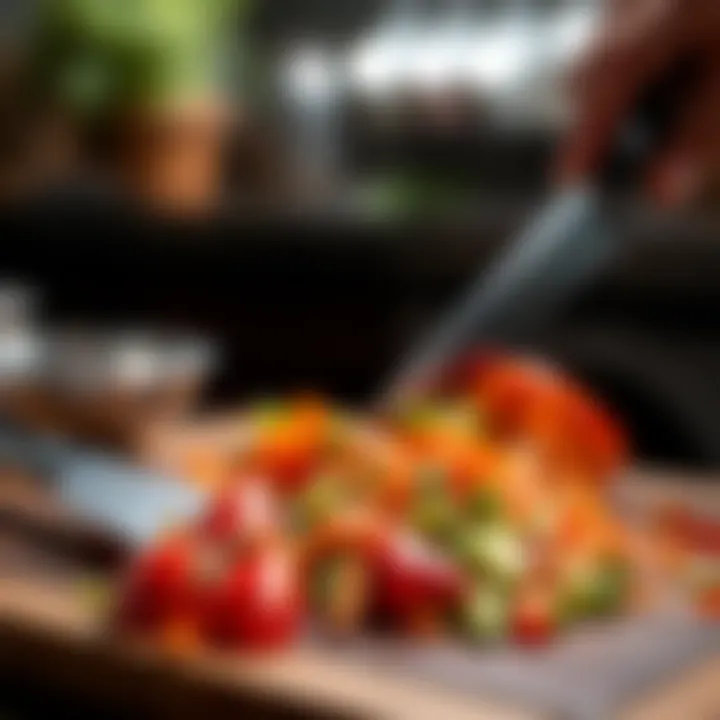
This technique shines when it comes to preparing larger items, as it allows the user to maintain contact with the cutting surface while performing a continuous cut. The rocking motion is a beneficial skill to learn, as it not only speeds up the chopping process but also lessens the strain on one's wrist over long cooking sessions. Nonetheless, some may find it challenging to master at first,
Advanced Techniques
Julienne
Julienne refers to the technique used to cut food into thin strips. This method is widely used for vegetables, making them visually appealing and quick to cook. The key benefit of julienne cuts lies in their ability to cook evenly and maintain texture, especially in stir-fries. A particular characteristic of the julienne method is its ability to create uniformity, ensuring consistent cooking and presentation.
However, julienning does require experience to execute perfectly, as each strip needs to be of similar size to avoid uneven cooking. As you cultivate your skills, the precision of julienne cuts will surely impress anyone who sets eyes on your meticulously crafted dishes.
Brunoise
The Brunoise involves finely dicing food into very small cubes, typically around 2mm on each side. This technique is often used for aromatic vegetables like onions and shallots, providing an excellent flavor base for sauces and soups. The key characteristic of the brunoise technique is its neatness; when done correctly, it gives dishes a sophisticated flair, elevating even the simplest meals.
Though the brunoise method showcases a chef's skill and precision, it can be time-consuming for novices and requires steady hands. Practicing this technique can enhance dexterity and promote greater control over knife handling, forming the foundation of advanced culinary presentation skills.
Pairing Knives in Different Cuisines
Understanding how pairing knives fit into various culinary traditions is essential for both novice cooks and seasoned chefs. Different cuisines have their own unique cutting techniques, ingredient preparations, and cultural contexts that dictate how tools, including pairing knives, are utilized. This section explores the significant role these knives play in Western and Asian cooking practices, emphasizing the adaptability and importance of learning to wield this versatile tool effectively.
Western Culinary Traditions
In Western culinary practices, pairing knives are typically used for precision tasks where flexibility and control are crucial. The ability to handle small ingredients like garlic cloves, shallots, or herbs makes these knives invaluable. The straight edge of many Western pairing knives allows for smooth, clean cuts when slicing or dicing.
"A good chef is only as good as their knife. The right knife changes everything."
Key Applications:
- Peeling and Trimming: Removing skins from fruits and vegetables like apples and potatoes is common. The agility of a pairing knife ensures that you can peel without wasting flesh.
- Mincing: When it’s time to chop garlic or fresh herbs like basil, the precision of a pairing knife can make a world of difference. You’re looking at even cuts that not only look good but also cook evenly.
- Detail Work: Engaging in intricate tasks like creating garnishes or preparing small pieces of meat can elevate a dish's presentation significantly. Here, the pairing knife shines with its ability to carve out delicate shapes.
Overall, in the Western culinary landscape, this knife is about control, offering the user room to express their creativity and technique in various preparations.
Asian Culinary Techniques
Moving to Asian cuisines, the application of pairing knives may not be as ubiquitous as in the West. However, when wielded correctly, they can serve unique purposes that enhance their cooking methods. Pairing knives fit into the broader spectrum of precision tools required for detailed tasks in Asian cooking, characterized often by fresh herbs, raw ingredients, and intricate knife skills.
Unique Uses:
- Herb Preparation: Pairing knives are ideal for cutting fragrant herbs like cilantro and green onions, commonly used in various Asian dishes. The fine cuts help to release the essential oils, enhancing flavors in the final dish.
- Vegetable Preparation: Ingredients such as ginger or garlic, often used in Asian cooking, can be quickly scraped and processed with a pairing knife, facilitating the rapid pace of food preparation that many Asian styles require.
- Fruit Decoration: Skills like making decorative cuts on fruits can be essential in Asian cooking, especially for dishes served at celebrations. Here, the pairing knife's precision can create stunning visual effects.
Innovative Uses of Pairing Knives
When we think about pairing knives, the first images that come to mind are likely those of chefs meticulously slicing fruits or deftly peeling vegetables. This section sheds light on the innovative uses of pairing knives, illustrating their significance beyond mere utility. Unraveling these applications not only showcases the versatility of this essential kitchen tool but also serves as a reminder that creativity in the kitchen can elevate both the appearance and taste of your culinary creations.
Food Styling
Food styling is an art in itself, transforming everyday meals into visual feasts. Pairing knives play a key role in this process, allowing for precision cuts that can make even the simplest dish look mouth-watering. Whether you’re creating a vibrant fruit platter or elegantly presenting a cheese board, the skillful use of a pairing knife can help to create intricate shapes and textures.
With its small blade size, the pairing knife excels in segmenting and sculpting food. Consider these points:
- Precision Cutting: For garnishing or creating fine details, the sharpness of a pairing knife allows for clean cuts. This can emphasize the natural beauty of ingredients, making colors pop.
- Detailing: Shapes like curls from vegetable peels, or thin slices of fruit can add decorative flair to your plates. You can easily create fan shapes from apples or zucchini with just a few careful cuts.
- Enhancing Presentation: A beautifully styled dish can be more inviting, making food more appealing at gatherings or dinner parties.
Whether you’re a professional chef or a home cook, utilize the pairing knife for not just functionality, but for enhancing the overall aesthetic of your food.
"Great food is a feast for the eyes and the palate. A simple pairing knife can make this possible."
Artisanal Applications
Pairing knives have carved out a niche in artisanal applications, bridging culinary expertise and artistry. The small blade is not just for chopping or peeling; it opens doors to a realm of creativity and craftsmanship in the kitchen.
Let’s look into some specific artisanal uses:
- Fruit Carving: Particularly popular in Asian cuisines, carving fruits into intricate designs requires a steady hand and the finesse of a pairing knife, providing dramatic effects for any fruit display.
- Cheese Sculpting: Imagine sculpting a block of cheese into a whimsical shape for a charcuterie board. The pairing knife allows for precise maneuvers to achieve the desired forms without crumbling the cheese.
- Edible Flowers: Creating delicate garnishes from edible flowers can enhance dish appeal. The fine tip of a pairing knife can carefully remove petals or trim stems, showcasing your artisanal skills.
Overall, integration of the pairing knife into artisanal food preparation helps to bridge the world of culinary arts and craftsmanship. It emphasizes the notion that even simple tools in the kitchen can yield stunning results when used with creativity.
Consider resources like Britannica or Wikipedia to explore more on culinary arts and food presentation.
The Future of Pairing Knives
As culinary practices evolve, so too do the tools we use in our kitchens. Taking a closer look at the future of pairing knives reveals much about innovation in knife manufacturing and the increasing consciousness toward sustainable practices. This section delves into emerging trends that are reshaping how pairing knives are designed and produced, alongside how these advancements are contributing to a more environmentally friendly culinary industry.
Emerging Trends in Knife Manufacturing
The landscape of knife manufacturing is undergoing a notable transformation. One significant trend is the integration of advanced materials and technologies, pushing the boundaries of what pairing knives can offer to the user. Many manufacturers are opting for high-carbon stainless steel, known for its ability to retain sharpness while preventing rust. This material is lightweight and makes the knife easy to handle.
Another noteworthy trend is customization. More companies are now offering bespoke knives tailored to individual preferences. From blade shape to handle materials, chefs can have their paired knives designed precisely to enhance their cooking experience. This brings a personal touch that not only elevates the cooking process but also creates an emotional connection between the chef and their tools.
Moreover, the introduction of adaptive technologies such as smart knives has started making waves. For instance, some knives are being equipped with sensors that monitor cutting techniques and even offer tips via connected devices. This unprecedented blend of technology and tradition promises to make the art of cooking even more engaging and efficient.
“Innovation does not stop at the blade; it’s a constant journey towards precision and excellence in culinary arts.”
Sustainable Materials
In a world increasingly focused on sustainability, the knives we use in our kitchens have also become a focal point for eco-friendly innovations. Manufacturers are exploring sustainable materials that not only minimize environmental impact during production but also ensure durability and effectiveness.
One of the primary materials gaining traction in the knife industry is sustainable wood, often sourced from responsibly managed forests. Handles made from woods such as bamboo or ash offer ergonomic benefits while promoting a green approach to manufacturing.
Another innovative approach involves the use of recycled materials. Some companies are crafting knife handles from recycled plastics or metals, thus promoting a closed-loop system that reduces waste.
Additionally, the push for minimal environmental footprint extends beyond mere materials. Companies are adopting practices that prioritize zero-waste production and eco-labeling their products to inform customers of their sustainable practices. This not only benefits the environment but also attracts a demographic increasingly concerned about their carbon footprint.















